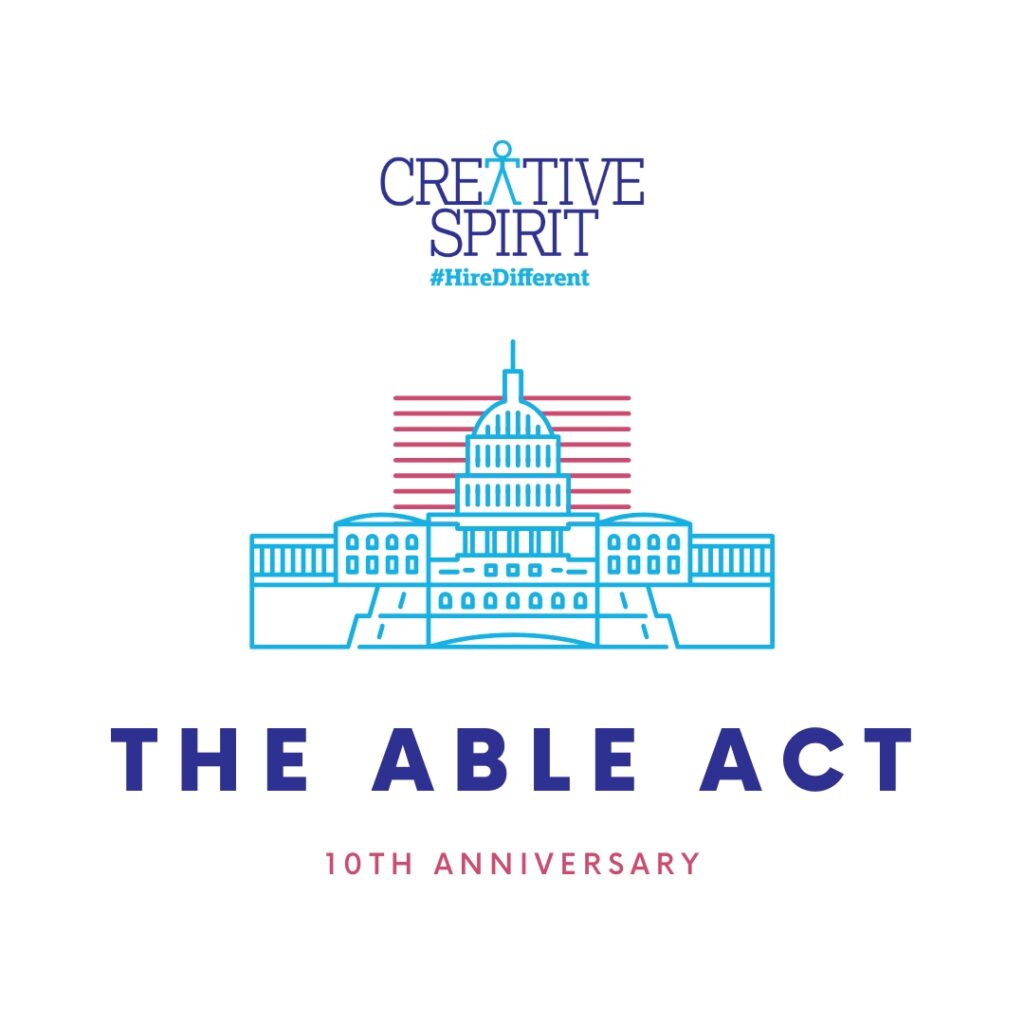By Menachem Rephun, Creative Spirit Communications Manager and Advocate

The Achieving a Better Life Experience (ABLE) Act
While the past several decades have seen progress, millions of Americans with disabilities still face severe inequities in education, employment, and earning a living wage. That’s why it’s more important than ever to ensure financial security and independence for the disabilities/neurodiverse community.
The Achieving a Better Life Experience (ABLE) Act marked an essential step towards achieving that goal. Signed 10 years ago on Dec. 19, 2014, the ABLE Act provided tax-free savings accounts for the first time in U.S. history, allowing people with disabilities to save and pay for qualified disability-related expenses. As a result, the ABLE Act is arguably the most significant disability rights law since the 1990 Americans With Disabilities Act (ADA). In short, what the ADA achieved for inclusion and accessibility in education, employment, and public transportation, the ABLE Act provides financial well-being and support.
Parents Played a Vital Role in Introducing The First ABLE Bill
One of the most notable aspects of the ABLE Act is that it began not with politicians but with ordinary people hoping to make a difference. Specifically, the ABLE Act began through an informal meeting of five parents from the Board of the Down Syndrome Association of North Virginia (DSANV).
After a local board meeting, those parents gathered to discuss inequities in the system that prevented people with disabilities and their families from saving for the future. The parents played a vital role in introducing the first ABLE bill, then known as the Financial Savings Account for Individuals With Disabilities (FSID) Act.
The bill was introduced in 2006 by Cong. Ander Crenshaw (R-FL) was renamed the ABLE Act in 2010 to better define the legislation’s purpose. The passage of the ABLE Act was led by Senators Robert Casey Jr. (D-PA) and Richard Burr (R-NC), and Representatives Crenshaw, Cathy McMorris Rodgers (R-WA), Chris Van Hollen (D-MD), and Pete Sessions (R-TX).
The ABLE Act itself is named after the late Stephen Beck Jr., who dedicated his life to ensuring inclusion and equality for Natalie, his daughter with Down Syndrome, and others like her with disabilities. Beck was one of the five parents who originated the concept of the ABLE Act. According to ExceptionalLives.org, the age limit to qualify for an ABLE account will be raised to 46 in 2026.
Cost of Living
Today, the high cost of living with a disability/disabilities makes the ABLE Act even more essential. According to the ABLE National Resource Center (ANRC), adults with disabilities require “on average, 28 percent more income to achieve an identical standard of living as a household of the same size and income where no one has disabilities. Millions of disabled individuals depend on public benefits [to support their] income, health care, food, and housing.” The ANRC adds that many needs-based programs restrict eligibility to people with less than $2,000 in countable resources and that they risk losing critical benefits if they save more than this limit.
By contrast, funds invested in an ABLE account “grow tax-free and can be used to supplement a broad range of expenses including food, housing, transportation, education, employment, medical expenses and more.” ABLE accounts are available for individuals whose disability began before age 26. They can meet the “required severity” of disability by receiving Supplemental Security Income payments or Social Security Disability Insurance (SSDI) Benefits. Applicants can also qualify through a signed document from a licensed physician with the applicant’s diagnosis, stating that they have “marked and severe” function limitations that began before age 26.
Uphill Battle to Earn a Livable Income
The ABLE Act also reminds us of the importance of hearing directly from disabled people about their needs, challenges, and experiences. In her influential essay “Is My Life Worth $1,000 A Month?” writer, artist, and disability rights activist Sue Kerr describes the financial struggle she still experiences as a disabled person. “My personal income puts me at the federal poverty level,” she writes.
“Even though I have a graduate degree and more than 30 years of both paid and unpaid work experience. Because I am disabled and no longer able to do most paid work, I receive about $1,000 through Social Security Disability Insurance [SSDI].” (Sue Kerr)
Kerr described her lifelong, uphill battle to earn a livable income, which came to a head in 2010, when she was forced to stop working full-time due to her disability. “After Medicare and student loan costs, I was bringing home a little under $1,000 per month in 2011,” she writes. “Fast forward to 2020, and I have a net monthly payment of $1,018 per month…after finishing this essay, I’ve learned that even that modest amount is threatened. The federal government just informed me that my benefits have been canceled, without offering an explanation. I have 60 days to appeal.” Kerr also notes other flaws with SSDI, such as the exhausting reauthorization and assessment process.
Inequity in The SSDI System
Kerr points out the inequity in the SSDI system, in which payments are calculated based on earned wages during the recipient’s working lifetime. Recipients who don’t meet the workforce requirement because of working part-time or leaving the paid workforce are issued a Federal Benefit Rate, which, at the time of Kerr’s writing in 2020, was $783 for individuals and $1,175 for couples. She describes this as “a classic case of how our value as neighbors, citizens, and human beings is determined by our net worth, not our humanity.”
Kerr also pushes back against the way that society dehumanizes people, particularly those with disabilities, by attaching their value to their net worth or their ability to work. “Society…teaches us that there are people who cannot work (the ‘deserving’ poor) and those who choose not to work (the ‘undeserving’ poor),” she writes. “The exception, of course, is for very rich people who inherit their wealth and are exempted from this moral distinction by virtue of their birth, regardless of their work histories.” Other people with disabilities have also shared the challenges they’ve faced navigating a system that does not adequately meet their needs.
Limits to How Much Money a Disabled Person Is Allowed to Have in The Bank
In a recent essay for The Hill, writer Jennifer Brooks, who lives with severe disability, explained that Medicaid generally limits how much money a person is allowed to have in the bank. For people with numerous disability-related expenses, this situation is often untenable. Brooks describes having her Disabled Adult Child payment abruptly terminated by Social Security, along with receiving a notice claiming that it had overpaid her $101,000. “In researching why I was cut off, I found that my story is far from unique,” she writes.
“Social Security penalizes tens of thousands of workers with disabilities each year by demanding they pay a debt that isn’t of their own making,” (Jennifer Brooks)
Brooks explains that Social Security attempts to blame overpayments on disabled workers’ failure to follow the rules. However, even those who have studied the rules carefully can be trapped by confusing communications and antiquated policies.
She notes that 71% of Social Security Disability Insurance beneficiaries who earn above a set amount receive overpayment notices, according to a Mathematica Policy Research report. “Just like anyone else, people with disabilities should have the option to work and be financially independent,” she writes.
“While the federal government, through laws like the Americans with Disabilities Act, has promised to help people with disabilities become gainfully employed, it continues to penalize disabled workers for taking them up on these promises.” (Jennifer Brooks)
Brooks suggests that the federal government must stop collecting these overpayments if it expects disabled people to work. She also suggests changing regulations to eliminate all income and asset restrictions and revising them to only apply to the top 5% of earners. Additionally, she advocates for changing Social Security’s policies to work with disabled people rather than penalizing them.
Possible Solutions To Fix SSDI
In a 2013 essay, “How to Fix Social Security Disability Insurance,” tax policy expert Howard Gleckman offers several possible solutions to fix SSDI for people with disabilities. Gleckman suggests identifying potential disability claimants quickly and using vocational rehabilitation and job training to keep them in the workforce, better integrating SSDI with health care and support services, and better aligning incentives for employers to retain workers with disabilities rather than letting them shift to SSDI. “One way to do that is universal private insurance that would cover the first two years of disability,” Gleckman writes. “This idea, which was developed by David Autor of MIT and Mark Duggan of the University of Maryland (now at Wharton), aims to keep people employed by giving firms a financial incentive to retain their workers.” Under this mandate, Gleckman writes, total premiums would average only around $20 a month, with employers and employees each paying part). As a result, SSDI would have substantial cost savings. On its website, the Committee for a Responsible Federal Budget offers “the reformer,” an interactive tool allowing users to build their plan to restore solvency for social security.
Essential Humanity Of All Citizens
In light of the issues and challenges with SSDI, the ABLE Act is a necessary and vital step in giving people with disabilities more significant opportunities to succeed financially and to meet their basic needs. However, legislation alone isn’t enough. As the stories of Kerr, Brooks, and millions of other Americans with disabilities reflect, actual change stems from reversing the marginalization of people with disabilities. A society that acknowledges and respects the essential humanity of all citizens, regardless of employment status or income, is the one that legislators, activists, and ordinary people can and must consistently strive for.
Sources:
2. https://www.ablenrc.org/what-is-able/what-are-able-acounts/ (more info on ABLE accounts)
5. https://taxpolicycenter.org/taxvox/how-fix-social-security-disability-insurance
6. https://www.crfb.org/socialsecurityreformer/
For those interested in protecting SSDI, here are a few more article links with useful and relevant information:
1. https://www.wjhl.com/news/national/social-security-beneficiaries-at-risk-of-delays-amid-gop-funding-fight/
2. https://www.crfb.org/blogs/what-would-trump-campaign-plans-mean-social-security
3. https://www.americanprogress.org/article/the-top-5-ways-project-2025-would-hurt-disabled-people/






